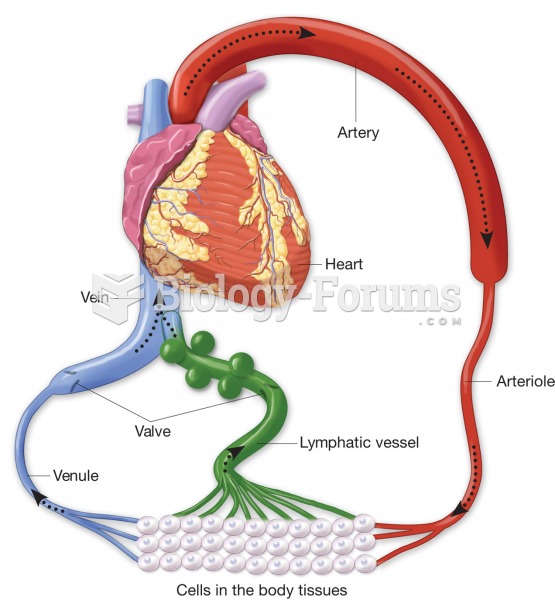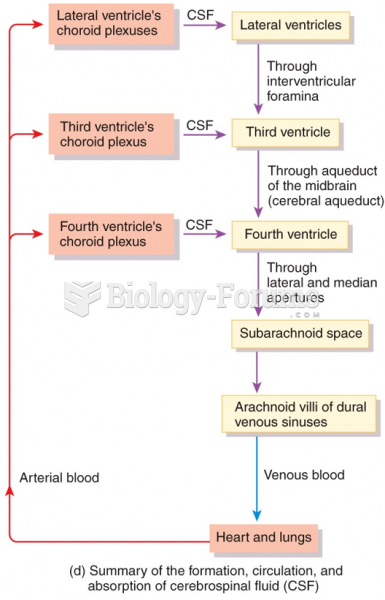|
|
|
In the United States, an estimated 50 million unnecessary antibiotics are prescribed for viral respiratory infections.
The heart is located in the center of the chest, with part of it tipped slightly so that it taps against the left side of the chest.
IgA antibodies protect body surfaces exposed to outside foreign substances. IgG antibodies are found in all body fluids. IgM antibodies are the first type of antibody made in response to an infection. IgE antibody levels are often high in people with allergies. IgD antibodies are found in tissues lining the abdomen and chest.
Multiple experimental evidences have confirmed that at the molecular level, cancer is caused by lesions in cellular DNA.
The calories found in one piece of cherry cheesecake could light a 60-watt light bulb for 1.5 hours.
 Lymphatic vessels (green) pick up excess tissue fluid, purify it in lymph nodes, and return it to th
Lymphatic vessels (green) pick up excess tissue fluid, purify it in lymph nodes, and return it to th
 Pericardial effusion: A, normal pericardial sac; B, pericardial sac with excess fluid possibly causi
Pericardial effusion: A, normal pericardial sac; B, pericardial sac with excess fluid possibly causi





